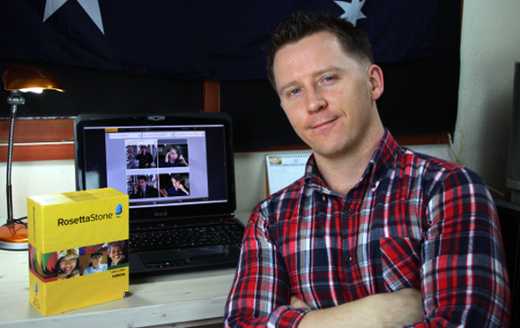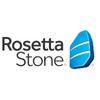The Most Balanced Rosetta Stone Review You'll Ever Read
 Written byHubert Nagel
Written byHubert Nagel- Read time23 mins
- Comments191


- Truly innovative and unique approach
- No explicit grammar
- TruAccentTM voice recognition
- Research-based
- Overpriced
- Inappropriate formality in some languages
- Culturally irrelevant images
- Lack of explanations may bother some
The price for Rosetta Stone is still unjustifiably expensive. However, Rosetta Stone remains after many years one of the most innovative, research-backed products on the language market. The intuition over explicit grammar aspect is still a point of contention for many users.
I decided to write this Rosetta Stone review because one of the most frequently asked questions in language learning discussions is whether or not Rosetta Stone is worth the money.
Does it work or is it just a well-marketed waste of time?
A quick online search for “Rosetta Stone review” yields many pages of reviews, nearly all of which are either extremely negative (directing you to an alternative product) or deceitfully positive (trying to earn a hefty commission on an expensive product).
Because of this it can be a challenge for fence-sitters to find reliable feedback.
Today I’m going to offer you some balanced insight on the method and content of Rosetta Stone, and whether or not it can be regarded as an effective learning tool.
Table Of Contents
Although there are some affiliate links here there are no Rosetta Stone commission links in this article and no links to my own product.
I should also add that this review has been updated to cover the latest version (from my original review of Version 3, not including the games, mobile apps and inflexible, teacher-directed lessons). What really matters at the end of the day is whether or not the core product is effective or not (and how much it’s changed over recent years).
As always, you’re welcome to share your thoughts and experience in the comment section below!
NOTE: I’ve recommended a far better, more comprehensive (and less expensive) alternative to Rosetta Stone below. Here are the Spanish and French editions. For other language editions, select them here:
Also be sure to check out the Essential Language Learning Tools page for recommendations on the best resources for getting started learning another language.
For lots of language learning content and helpful advice, make sure to stay “Join the Guild” by signing up below this article.
What gives Rosetta Stone a notorious reputation
A lot of the criticism of Rosetta Stone in online reviews stems from its biblically-proportioned price tag but not enough is actually said about how the software is intended to work.
I’ll attempt to do that here.
I will state from the outset however that I agree with most that the program is indeed outrageously expensive. At the time of this writing, I’ve seen the complete packages of Version 4 (all levels) selling for up around $250 USD through various vendors online like Amazon.
For the average home user this is unjustifiably expensive.
BIG UPDATE: The RS pricing on its website has improved enormously since this review was first written.
With the rise and popularity of subscription payment options for many products and services online, RS has made a move in the same direction.
There are now 4 purchase options (all of which depend on the length of time you subscribe) for Rosetta Stone:
Lifetime:
$299$19924 months:
$249$167.7612 months:
$179$119.883 months: $35.97
NOTE: I’ve listed the actual prices here you have to pay at checkout (they show a much lower “monthly” amount which is a little confusing/deceptive).
There’s also a CD/Physical package available on Amazon: Price can vary but right now it’s: $244.98_
The price remains steep.
Now, I’m sure that their “world’s best” speech recognition technology (TruAccentTM), research and expensive marketing campaigns account for most of this cost but for the average home user looking for a foreign language solution that’s well and truly beyond their means.
Just to give you an idea, these are just a few other things this kind of money could get you:
- Approximately 20 – 30 personalised, student-directed, one-on-one lessons with a native speaker via italki (approx. $10-12 an hour).
- Roughly 1_0 in-person, private lessons with a language instructor in your own area (approx. $25-30 an hour)
- For those living in Europe, several return flights to another European destination on a low-budget airline and a week or two of accommodation in an inner-city hostel to practise the language with the locals.
- For those in the US or Australia, it’s a large chunk of the cost for a budget trip to Latin America or South East Asia to immerse yourself in the local language.
- Almost any book or audio course on the market which are usually priced anywhere between $30 to $100 (save the rest or combine it with italki lessons).
I praise italki a lot on this blog (check it out here if you haven’t already).
One extremely good and affordable alternative that’s similar to Rosetta Stone for learning languages is Mondly which sells for less than $15 a month, and is one of the most innovative language products I’ve ever seen.
Or at a slightly higher price (though much lower than Rosetta Stone) the audio component of the Rocket Languages series (mentioned above) is outstanding. I’ve personally used it for several languages and I can’t emphasize enough just how comprehensive and good it is (see my review here).
You can select a language here to sample it and compare the pricing with Rosetta Stone:
I’ve also listed some other excellent alternatives on my Essential Language Learning Tools page.
There are just so many better alternatives to spend money on!
It’s true that some people have no problem affording Rosetta Stone and there is of course the option of buying an older version or a second-hand copy which is a significantly cheaper option.
For those of you who do have RS or are planning to get it anyway despite the cost, keep reading!
The Rosetta Stone online subscription has the potential to be a financial trap
I mentioned that Rosetta Stone has gone in the direction of online subscription-based services.
There’s one important thing to consider here:
As I said in my Living Language review, it makes little sense to sign up for a limited online subscription to the exact same content_ as the physical product.
With the Rosetta Stone online subscription, you’re getting a limited 24 months access to the full software for the same price as you would if you bought the CD’s or downloadable product which would give you lifetime_ access.
If you buy the CD or downloadable version, you own it for life.
BTW: Contrast this with other programs like Innovative or Rocket which allow you to download the entire course for offline use (in other words, you own it forever even if you cancel).
So don’t make the mistake of buying an online subscription that will lock you out after a period of time is over. It’s just not worth it (UNLESS: it’s important to you to be able to access the content across multiple devices in which case I would argue otherwise).
Now… on to the content review.
Most common Rosetta Stone review complaint: “I don’t know what it means if it’s not explained!”
The major criticism of the RS method is that no explicit explanations or translations are given.
Rosetta Stone prides itself on being an immersion tool that never uses L1 translations or explanations, forcing the user to rely solely on their own intuition while gradually acquiring the language content necessary for the next level.
In order to do this successfully it’s expected that you move through the program in a linear progression, expanding on the initial one or two word building blocks at the beginning of level 1 to some long, grammatically complex sentences in the higher levels.
People who enjoy the convenience of looking up grammatical explanations and always having the answer at their fingertips simply won’t appreciate this approach however.
I recently wrote about how living in the Google era where information is so easy to obtain means we’re no longer training our problem solving skills the way we used to – we’re all becoming increasingly stupider as our technology addiction grows.
Why do I need to figure stuff out when I can just Google it?
People treat information the same way they treat food these days. I****f it can’t be cooked in the microwave or bought in a drive-thru then it’s too much effort!
There are plenty of Rosetta Stone reviews out there but I wanted to embed one video review here that was put up recently about the Arabic version as the no explanation issue was one of the main criticisms that the reviewer had (and also to share her other points for the sake of balance).
She explains how she drove across town to get a translation for something that she almost certainly would have inferred on her own with a little patience.
I understand this initial frustration because I’ve just sampled a review copy of Rosetta Stone Korean myself and there were times where the images and sentences didn’t make any sense but I just accepted that I didn’t know and moved forward anyway knowing that the answer would eventually come.
Just to give you an example, I can recall one lesson where vocabulary for death, birth and marriage were introduced along with sentence structures to describe how long ago a person was born, got married, died, etc.
I was pretty confused here when I was hearing for the first time sentences about a child being already born, the grandparents being married for x amount of years and the grandfather passing away in the 1900’s. The pictures gave a good enough indication of what was going on but there was quite a lot of unfamiliar content too.
However I just put impatience aside and kept moving forward with the lessons, and it didn’t take long for everything to start coming together.
Through repetition and the various images it almost always becomes clear as it’s intended to (I have to say almost because there have been a total of 2 times where I resorted to a dictionary for clarification).
I learned Arabic as a teenager living in an Egyptian village surrounded by people who didn’t speak my language and a lot of my learning came about from essentially the same kind of process – repetition, visual cues and my own intuition.
There was never the option of driving across town for a translation.
Critics call Rosetta Stone’s natural immersion approach unnatural but for a piece of computer software I have to say it does a pretty good job at imitating a lot of the natural acquisition process – if you allow it to.
Inappropriate or unnatural speech styles for some languages
I can’t review every language version of Rosetta Stone but for some of them there’s definitely one area where it performs badly:
Speech styles and honorifics.
Languages like Korean and Japanese use various levels of politeness and honorific vocabulary depending on who you are and who you’re talking to. A child speaking to or about their grandparents would use a respectful style of speech that they would never use to their friends in the playground for example.
The problem with Rosetta Stone Korean (and I suspect the same is true of Japanese) is that it does a poor job at demonstrating this.
It is there but it’s just not clear enough.
There are also images throughout the program of people using honorific styles in a way that simply wouldn’t be seen in reality and there’s no casual speech used in the dialogues at all (e.g. in one lesson there’s a picture of a mother using a polite honorific form to address her daughter which is a little strange).

The Arabic edition also teaches conversational MSA (the dialect used for formal and written occasions) rather than a spoken dialect which would be far more practical and realistic.
Rosetta Stone isn’t alone in doing this though as most of the resources out there are just as guilty.
It’s not to say that you can’t learn polite, formal forms now and pick up the casual stuff later on but in my opinion it should always be the other way round.
If you have experience with another language version, please share whether or not you found similar issues with formality and inappropriate styles of speech when you used it.
Culturally irrelevant images and content
Two other frequent concerns with Rosetta Stone are that the images are culturally irrelevant and that essential language content is introduced too late or not at all.
Now, I have to say that it is a bit annoying to see photos that are set in a North American context when you’re learning a language of East Asia but I don’t think it’s a major problem.
A man is a man and a woman is a woman after all, regardless of what clothes they’re wearing or what context they’re standing in.
What would be nice however is if each language contained units with food, etiquette, cash and cultural expressions that are unique to each specific language.
Korean 1 introduces a lot of food and money content that aren’t really relevant to South Korea.
For example, South Korean currency is in the 10,000’s and it takes quite a bit of getting used to when counting cash amounts but I don’t think that Rosetta Stone adequately prepares learners for this.

I also believe that it’s essential to have an extra unit in each language package that deals specifically with local cuisine.
Learning how to say words like carrot and juice won’t benefit me much where I’m currently living so a good section on the kinds of meals I’d find in a Korean restaurant would be very handy.
Despite the irrelevance of some of the content, I have to say that you’re still getting good exposure to a whole range of vital sentence structures, vocabulary and numbers so at the end of the day I don’t think it’s that big of an issue.
Speaking units and the speech recognition system
Rosetta Stone prides itself on having “the world’s best speech recognition technology” called TruAccentTM.
Speech recognition technology has come a LONG way in recent years but it’s still true that a computer is never going to be a substitute for another human being.
I don’t doubt that an enormous amount of work has gone into developing the TruAccent speech recognition technology behind the Rosetta Stone speaking component but it’s still miles away from complete accuracy.
Numerous times while putting together this Rosetta Stone review, I’ve deliberately spoken incorrectly into the microphone and had the software tell me I’m right.
I’ve also been told I’m wrong when I know I’m speaking accurately.
This would have been a very expensive thing for the company to develop, ultimately driving the cost way up for the consumer and yet it still doesn’t always work the way it should.
However!
What I think is absolutely brilliant about the speaking component is the way in which it forces the user to attempt to accurately recall the language while under pressure.
Output is vital in successful language acquisition and yet many people shy away from it until they’re “ready” which I believe is disastrously neglectful.
The Rosetta Stone speaking component does a decent job at breaking people out of that habit.
While it certainly isn’t the same as talking to a native speaker, the way that it places you under pressure to quickly recall and reproduce accurate sentence structures and vocabulary makes an enormous difference to your ability to do it in a real conversation.
The speech recognition software is far from perfect but the role it plays in forcing you to recall dialogue is really beneficial.
It’s a lot easier to recognize and identify something when you see or hear it but actually reproducing it spontaneously with a time constraint requires lots of practise.
Rosetta Stone deserves credit as it’s still one of the few products on the market that provides a much-needed feature like this.
No explicit grammar!
This is one area where I believe Rosetta Stone is spot on the mark.
As I said above, sentence structures are introduced gradually by the program in a linear progression, beginning with very clear structures (e.g. copula expressions and basic phrases) and working up to complex patterns in the higher levels.
Occasionally the program will highlight the grammar point to make clear what the user should be focused on:

This is where intuition and a bit of common sense make the world of difference.
The pictures above for example introduce a conditional sentence structure or the equivalent of “I wish/hope” in Korean (if it is ____, it would be good / I hope it’s _____).
There are about 3 or 4 other sequences of images that follow this one with a similar scenario – a picture of a person looking expectant followed by them looking either delighted or disappointed. You might be completely baffled the first time round but if you consider for a moment what’s happening in each set of images, you can infer at the very least that the first picture is one of hopefulness or expectation.
As I’ve said many times in the past, research (and experience) prove that you don’t need to study grammar to learn to speak a foreign language.
It often does more harm than good.
The part highlighted in red in that picture (- ) is what I and other SLA researchers call a language chunk – it’s a set formula that you learn as a whole and there is no need whatsoever as a new learner to break it down and dissect its grammatical constituents.
Nearly all of the expressions we use every day in our mother tongues are completely unoriginal, recycled language patterns/chunks that we’ve been exposed to constantly since the day we were born – just like the one in that picture.
Rosetta Stone does a very good job at progressively introducing these patterns with images that clearly reflect their meaning.
NEW: Rosetta Stone responses to my review questions
Rosetta Stone kindly took the time to respond in detail to some of my important questions for this review.
It’s always important to me to make sure I give the product creators or publishers a chance to respond to my tough questions.
Here they are:
1. Was the RS “immersion” method ever based on research? Is that research available to be read?
The Rosetta Stone approach to language learning is based on established language-teaching approaches from second-language acquisition and applied linguistics, and proprietary Rosetta Stone research on learners’ experiences with language learning.
Our approach is immersive in the sense that we use the target language as much as possible to encourage an immersive experience for the learner and to maximize input.
We focus on teaching all four skills (reading, writing, listening & speaking), but place an emphasis on listening and speaking. Our focus on production distinguishes us from our competitors, and recent research shows that production is critical to language learning.
Here are some recent examples from research that highlight the importance of production:
Producing a language during learning can improve comprehension (Hopman & MacDonald, 2018).
Production demands more attention than comprehension (Boiteau et al., 2014).
Recalling information from memory and using it leads to information retention, aka the “testing effect” (Roediger & Karpicke, 2006).
Boiteau, T. W., Malone, P. S., Peters, S. A., & Almor, A. (2014). Interference between conversation and a concurrent visuomotor task. Journal of Experimental Psychology: General, 143 (1), 295–311. doi: 10.1037/a0031858.
Hopman, E. W. M. & MacDonald, M. C. (2018). Production practice during language learning improves comprehension. Psychological Science, 29(6): 961-971. Available at:10.1177/0956797618754486.
Roediger, H. L., III, & Karpicke, J. D. (2006). Test-enhanced learning: Taking memory tests improves long-term retention. Psychological Science, 17, 249–255.
2. The RS software is now an online, subscription-based web app rather than boxed software. Has the Rosetta Stone method itself been changed, improved or updated in any way since my first review? Or is the lesson content *identical* to the original boxed software?
We have added translation to English glosses for the earliest course content in our most popular languages and are continuing to expand translation availability across learning and languages.
These translations can be accessed at-will during study as a way for learners to confirm what they’re learning as they progress through the course. By design, translations are not available in the Grammar or Review activities.
Also, tutoring content was modified to support shorter and more frequent sessions so learners can have more regular exposure to a live native speaker.
3. If so, what specifically has changed in the online subscription edition vs. the old boxed versions?
Our mobile app features:
Seek & Speak — Using object-recognition technology that leverages augmented reality, Seek & Speak turns everyday objects into conversation practice with scavenger hunt-style challenges. Seek & Speak enables users to point their phone’s camera at an object and receive a translation in their language of choice, and then practice conversation using the newly obtained vocabulary with TrueAccent. The feature is now in beta for English, French, Spanish, Italian and German and will expand to include more scavenger hunt challenges and languages throughout 2019 & 2020.
Embedded Translations — In response to user feedback, Rosetta Stone has added embedded translations. At any point in the immersive experience, customers seeking clarity on vocabulary can “long-press” on a word to reveal its translation.
Phrasebook — Rosetta Stone’s Phrasebook teaches language learners how to say useful phrases, with over 164 phrases across 8 categories. Perfect for travelers, Phrasebook features native speakers saying everyday phrases that are useful in common situations, such as meeting people, dining out, and staying in a hotel. Phrasebook uses translation to provide meaning and speech recognition to provide speaking practice, in order to provide a quick-start for learners looking to engage in some real world situations quickly before devoting time to more extended study. Phrasebook works offline, so users don’t need an international data plan to speak confidently while traveling abroad.
Additionally, the online application makes it easier to schedule tutoring sessions (on web, with mobile to follow soon) and to access the longer form texts in Stories.
4. What sets TruAccent apart from, say, Google Web Speech API or Babbel’s speech recognition in terms of pronunciation accuracy? It’s a patented technology – what makes it superior?
Rosetta Stone gives feedback on a user’s pronunciation and cadence, which most others do not.
For example, Rosetta Stone teaches normalized business English for U.S. English, which TruAccent can measure, and TruAccent can distinguish Spanish from Spain vs. South America.
The regionalisms are even more pronounced for some indigenous languages.
5. One of the main problems I experienced writing my review is that Rosetta Stone uses very formal speech samples (unnatural). Are there any informal patterns used now in any of the languages?
In all of our language solutions, we try to teach conversational language that real people use in real situations.
We choose to teach the formal register first and primarily, believing that this will provide our learners with a foundation that will serve them well over their language-learning journey. We know that there’s even more we can teach, in every language, and we’re always considering ways to improve and expand on what we already offer.
As we continue to add new, situational content, we are focusing on practical language using whatever register is appropriate for those interactions.
Rosetta Stone review summary: is it worth the investment?
As I’ve already written above in my review, the price for a brand new copy of the latest version of Rosetta Stone is unjustifiably expensive.
For nearly all of the languages that Rosetta Stone provides, there are excellent free and inexpensive alternative materials available online. I’ve also given you some ideas on what you could otherwise afford if you have that kind of money at your disposal, including inexpensive quality options like italki and Mondly.
However…
I would have no hesitation recommending an older or second-hand version to supplement a person’s learning.
The key word here though is supplement.
I always say that variety is key and you should never rely solely on any program or book. Even though Rosetta Stone is designed to work on its own, I suggest using it in conjunction with other listening and reading material, and most importantly regular practise with native speakers.
Despite its faults, it can be a very effective piece of software.
One thing that has caught my attention recently is the Rosetta Stone Endangered Language Program which according to the website currently covers 6 Native American languages.
I know from my experience back home that the Australian aboriginal communities in particular would benefit from a project like this given the lack of resources available for most of them.
Sadly, as I mentioned a while back, the software still has its astronomical price tag even for the endangered language programs which is just going to create another deterrent for indigenous people wanting to help their own language. It’s a challenge getting newer generations of indigenous people to take an interest in keeping their languages alive and most of them would probably struggle to afford such an expensive piece of software.
It’d be great if there was some attempt to subsidise this in future!
I hope you’ve found this review useful.
Please share your thoughts and experience (positive or negative) about Rosetta Stone in the comment section below and make sure to visit my Essential Language Learning Tools page for more useful resources.
Select the language you’re learning below and enter your email address for exclusive language-specific content, tips and advice.
Thanks!
 Grab the link to this article
Grab the link to this article